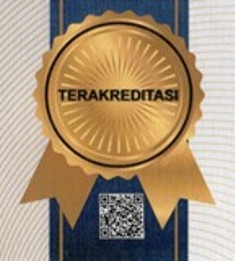Spatial Determination of Earthquake Prone Zoning in Cugenang Sub-District
DOI:
https://doi.org/10.24036/sjdgge.v8i1.594Keywords:
Earthquake; Lithology; Fault; ZoningAbstract
Indonesia is one of the countries prone to earthquakes due to the importance of geological processes. Plate interactions cause seismic phenomena that have an impact on human life. This research aims to identify the factors that influence earthquakes in Cugenang District and determine earthquake-prone zones located in Cugenang District. The data is processed using a weighting system and Spatial Multi Criteria Analysis (SMCA). This overlay technique uses four parameter maps, namely rock formation maps, slope slope maps, earthquake distribution and scale maps, and geological structure maps. Making maps using geographic information system analysis and remote sensing. The main factor in the damage that occurs is due to fault movement at fine depths and the type of lithology, causing damaging vibrations. The results of the research show that Cugenang District has areas that are very high, high, medium and low prone to earthquakes. High zoning is along the fault movement path, medium category division is in areas far from the epicenter and faults, and low earthquake prone areas are very far from the epicenter and fault alignment. Making a map of earthquake-prone zoning in Cugenang District can be a recommendation for development. The government needs to carry out building code management for buildings that will be built and place buildings in zones that are safe from fault movement.
Downloads
References
[2] J. B. Minster and T. H. Jordan, “Present‐day plate motions,” J. Geophys. Res. Solid Earth, vol. 83, no. B11, pp. 5331–5354, 1978, doi: 10.1029/jb083ib11p05331.
[3] Supartoyo, Surono, and E. T. Putranto, “Katalog Gempabumi Merusak di Indonesia Tahun 1612-2014,” Pus. Vulkanol. DAN MITIGASI BENCANA Geol., vol. 2014, no. 57, p. 151, 2014.
[4] P. Supendi et al., “Analisis Gempabumi Cianjur (Jawa Barat) Mw 5.6 Tanggal 21 November 2022.” [Online]. Available: https://inatews.bmkg.go.id/.
[5] R. W. Van Bemmelen, “The Geology of Indonesia. General Geology of Indonesia and Adjacent Archipelagoes,” Government Printing Office, The Hague. pp. 1–766, 1949.
[6] L. E. Hutabarat and Program, “TINJAUAN GEOLOGIS GEMPA CIANJUR NOVEMBER 2022 Lolom Evalita Hutabarat Indonesia terdiri dari empat lempeng tektonik yang berbeda : Lempeng Indo- Australia , Lempeng Eurasia , Lempeng Laut Filipina , dan Lempeng Pasifik . Khusus untuk Indonesia bagian timu,” vol. 4, no. 1, pp. 46–53, 2023.
[7] B. Nasional and P. Bencana, “Rencana Nasional Penanggulangan Bencana 2020-2024.”
[8] Y. Malik, “PENENTUAN TIPOLOGI KAWASAN RAWAN GEMPABUMI UNTUK MITIGASI BENCANA DI KECAMATAN PANGALENGAN KABUPATEN BANDUNG.”
[9] S. Kusmajaya and R. Wulandari, “KAJIAN RISIKO BENCANA GEMPABUMI DI KABUPATEN CIANJUR.” [Online]. Available: http://dibi.bnpb.go.id/
[10] S. Ara, “Impact of Temporal Population Distribution on Earthquake Loss Estimation: A Case Study on Sylhet, Bangladesh,” Int. J. Disaster Risk Sci., vol. 5, no. 4, pp. 296–312, Jan. 2014, doi: 10.1007/s13753-014-0033-2.
[11] J. León and A. March, “Taking responsibility for ‘shared responsibility’: urban planning for disaster risk reduction across different phases. Examining bushfire evacuation in Victoria, Australia,” Int. Plan. Stud., vol. 22, no. 3, pp. 289–304, 2017, doi: 10.1080/13563475.2016.1234368.
[12] RAHADIAN ESA GALANG PERSADA, “PENGGUNAAN METODE SPATIAL MULTICRITERIA EVALUATION (SMCE) UNTUK PENILAIAN RISIKO BENCANA TSUNAMI (STUDI KASUS : PESISIR KABUPATEN CILACAP),” Institut Teknologi Sepuluh Nopember, 2019.
[13] Puslitbang Geolog, “No Title,” Peta Geologi Lembar Cianjur, Jawa Skala: 1:100.000.
[14] Djadja & Indyo Pratomo, “Potensi Bencana Alam Gempa Bumi dan Gerakan Tanah, di Kawasan Taman Nasional Gunung Ciremai dan Sekitarnya,” J. Biol. Indones., vol. 5, no. 3, pp. 339–354, 2009.
[15] Jonathan G. Price, “Guidelines for Evaluating Potential Surface Fault Rupture/Land Subsidence Hazards in Nevada.”
[16] T. K. T Nakata, “Land use issues against potential danger of active fault and active fault zones act,” Act. Fault Res. 23, pp. 13–18, 2003.
[17] S. Pakpahan, M. P. Tambunan, M. D. M. Mannesa, and R. P. Tambunan, “POLA SPASIAL BAHAYA GEMPA BUMI DI SEKITAR BANDARA KERTAJATI DAN KESESUAIANNYA TERHADAP TATA RUANG WILAYAH,” J. Geosaintek, vol. 7, no. 2, p. 73, Aug. 2021, doi: 10.12962/j25023659.v7i2.8590.
[18] Alaska Seismic Hazards Safety Commission, “2018 M7.1 Anchorage, Alaska Earthquake IssuesNo Title,” 2018. [Online]. Available: https://seismic.alaska.gov/download/ashsc_meetings_minutes/sig_eq_2018_Anchorage_final_update_120619.pd
[19] M. D’Oro, R. & Thiessen, “Strict building codes helped Anchorage withstand quake.” [Online]. Available: https://apnews.com/article/anchorage-northamerica-us-news-ap-top-news-earthquakes018a78f7cfb646b8a6653766a953cacd..












